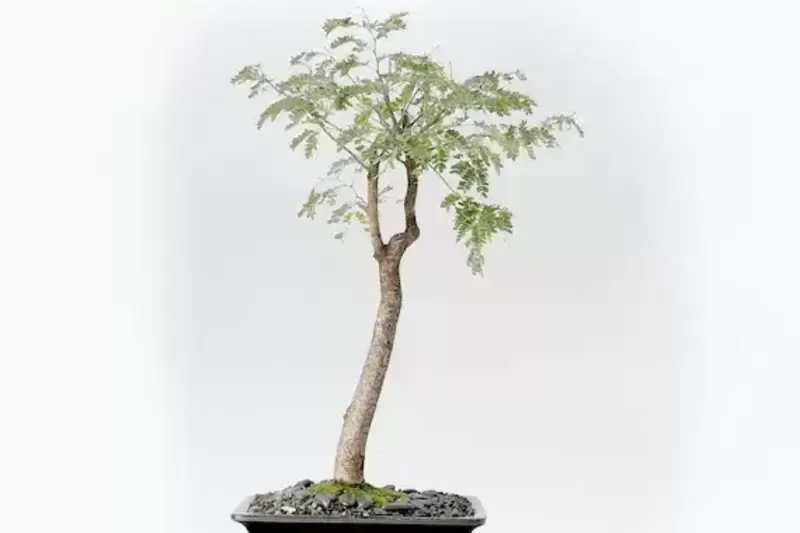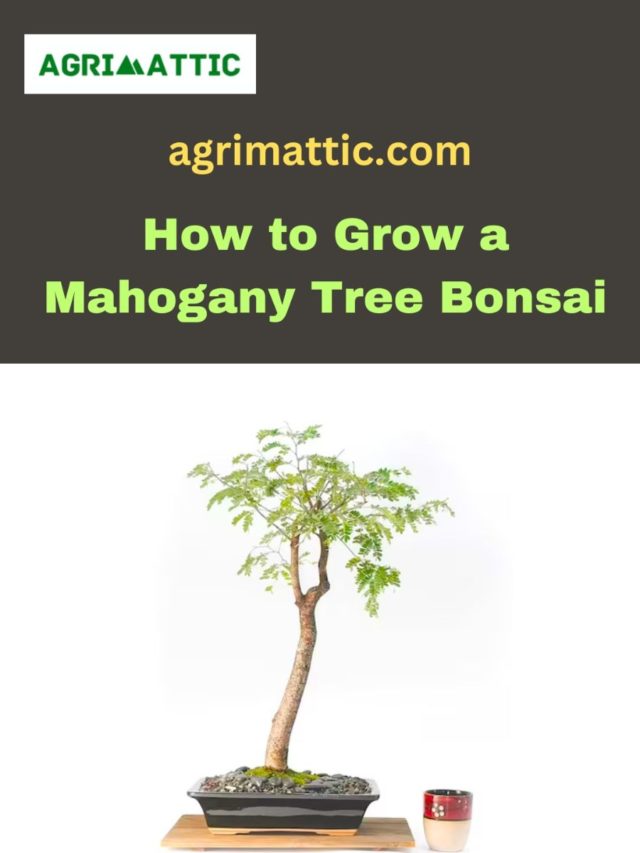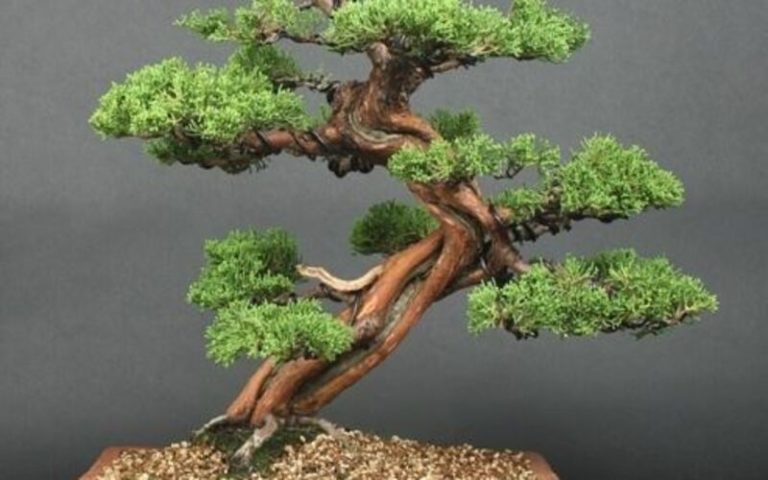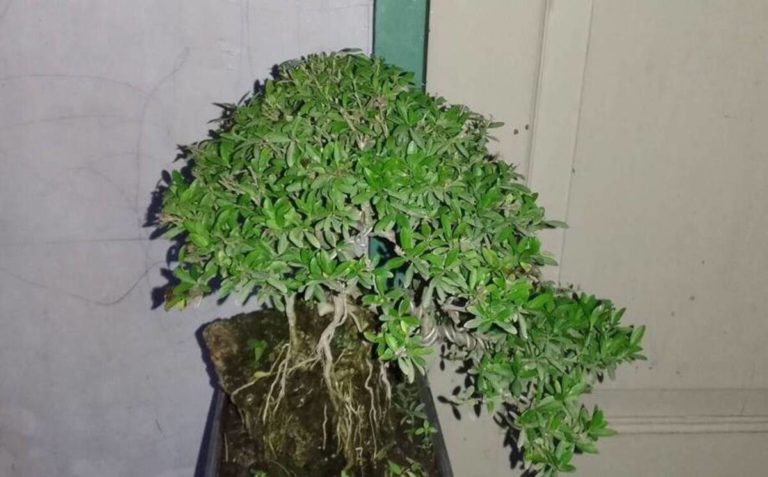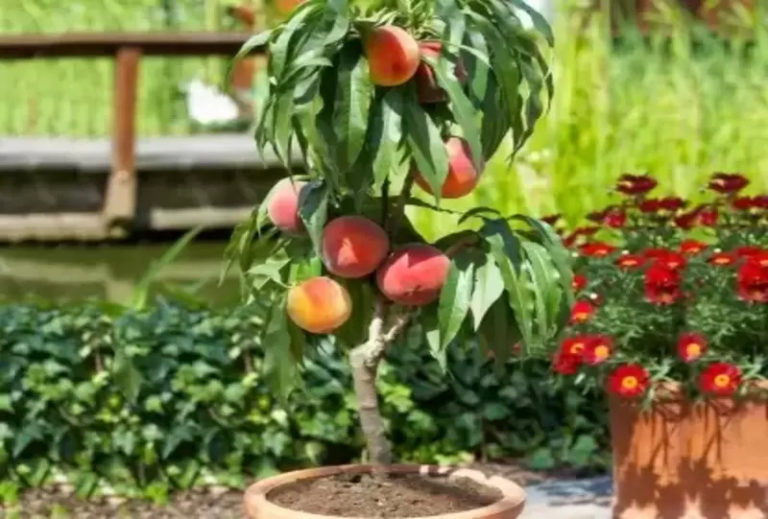Mahogany Tree Bonsai: Captivating Your Senses with Miniature Majesty
Bonsai is the art of growing miniature trees, and the mahogany tree bonsai is an excellent example. This article will teach us about mahogany tree bonsai and how to care for and style them. Also, we’ll understand how critical it is to optimize content for search engines in order to make it more visible online.
What is Mahogany Tree Bonsai?
Mahogany tree bonsai is the art of growing and shaping mahogany trees in miniature form through the practice of bonsai. It involves carefully selecting a suitable mahogany tree species, nurturing it in a bonsai environment, and pruning and training it to create the desired shape and form. Mahogany tree bonsai can be showcased using display stands or tables, and styling techniques such as wiring and bending are used to enhance its aesthetic appeal. It is a creative and artistic way to appreciate the beauty of mahogany trees on a smaller scale.
History and Origins of Mahogany Tree Bonsai
The history and origins of mahogany tree bonsai can be traced back to the art of bonsai itself, which originated in ancient China and later gained popularity in Japan. Bonsai, meaning “tray planting” in Japanese, involves the cultivation and artistic shaping of trees in small containers.
The tropical Central and South American home of the mahogany tree has made its coveted wood much sought after for millennia. However, bonsai has been around for a while, with its roots going back more than a thousand years.
The art of bonsai is believed to have originated in China during the Tang Dynasty (618–907 AD). Chinese scholars and monks would grow miniature trees in pots as a form of meditation and as a representation of nature’s harmony in a confined space. These early bonsai trees were primarily displayed in the courtyards of temples and admired for their beauty.
Japanese monks studying in China brought back the art of bonsai and taught it to their own culture during the Kamakura era (1185-1333 AD) in Japan. Bonsai grew over time and is strongly ingrained in Japanese tradition and aesthetics. Bonsai experts in Japan improved the methods and forms, bringing bonsai to a highly regarded art form.
While the specific origins of mahogany tree bonsai are not well documented, the practice of cultivating mahogany trees as bonsai likely emerged as enthusiasts sought to incorporate different tree species into their miniature landscapes. Mahogany trees, with their distinctive features and striking wood, caught the attention of bonsai enthusiasts, who appreciated their natural beauty in a reduced form.
Mahogany tree bonsai is still a popular option among bonsai lovers all over the world. The art form allows for the enjoyment of mahogany trees’ distinct traits while showing the ability and creativity of bonsai artists. Mahogany tree bonsai’s history and roots are entwined with the rich tradition of bonsai itself, spanning centuries of cultural interchange and aesthetic expression.
Mahogany Tree Bonsai and Their Symbolism
Mahogany tree bonsai holds symbolism that reflects both the characteristics of mahogany trees and the broader meanings associated with bonsai as an art form. Here are some symbolic aspects of mahogany tree bonsai:
1. Strength and Resilience: Mahogany trees are well-known for their strength and durability. They represent strength and persistence in the face of adversity as bonsai. A mahogany tree bonsai’s capacity to survive pruning, shaping, and the confines of a small container shows the tree’s inherent strength and adaptability.
2. Longevity and Timelessness: Mahogany trees live a long time and its wood is highly appreciated for its strength. Mahogany tree bonsai represents longevity and timelessness in bonsai. The technique of growing and grooming a tree that may outlast its caregiver displays reverence for time’s passage and nature’s eternal beauty.
3. Natural Beauty and Elegance: Mahogany trees are revered for their natural beauty, with glossy leaves and a sturdy trunk. As bonsai, mahogany tree bonsai symbolizes the appreciation of nature’s elegance and the quest for capturing that beauty in miniature form. The intricate styling and design of the bonsai reflect the desire to harmonize with and mimic the grandeur of nature.
4. Wisdom and Patience: Bonsai cultivation requires patience, meticulous care, and a deep understanding of tree growth. Mahogany tree bonsai represents wisdom and patience as bonsai artists nurture and shape the tree over time. It symbolizes the value of patience, knowledge, and the rewards that come from dedicated efforts and a deep connection with nature.
5. Balance and Harmony: Bonsai, including mahogany tree bonsai, embodies the concept of balance and harmony. The careful pruning and shaping techniques used in creating a visually pleasing composition symbolize the pursuit of balance between the tree’s branches, roots, and overall form. Mahogany tree bonsai teaches us the importance of balance and harmony in our own lives and environments.
Overall, mahogany tree bonsai carries symbolism that resonates with strength, resilience, longevity, natural beauty, wisdom, patience, and balance. It represents the profound connection between humans and nature, inviting us to appreciate the intricacies of the natural world and reflect on our own place within it.
Characteristics of the Mahogany Tree Bonsai
The mahogany tree bonsai has various distinguishing features that make it an enticing and sought-after bonsai specimen. The following are some distinguishing features of the mahogany tree bonsai:
Glossy Leaves: Mahogany tree bonsai showcases lush and glossy leaves, which are one of its defining features. The leaves are typically deep green in color and have an attractive sheen, adding to the visual appeal of the bonsai.
Sturdy Trunk: Mahogany trees are known for their robust and substantial trunks. When cultivated as bonsai, the mahogany tree bonsai retains this characteristic, displaying a strong and well-formed trunk that conveys a sense of age and stability.
Textured Bark: The bark of mature mahogany trees exhibits an interesting texture with deep fissures and ridges. As the mahogany tree bonsai ages, the bark develops a similar textured appearance, enhancing the overall aesthetic appeal of the tree.
Beautiful Wood Grain: The rich, reddish-brown hue and distinct vein pattern of mahogany wood make it highly coveted. Even though the small scale of the bonsai tree may reduce the visibility of the wood grain, the mahogany tree bonsai retains the essence of its esteemed wood, which adds to its appeal.
Tolerant of Pruning: Mahogany trees have the remarkable ability to recover quickly from pruning. This characteristic makes them well-suited for bonsai cultivation, as they can withstand regular pruning and shaping without compromising their overall health and vitality.
Drought Tolerance: Mahogany trees are inherently tolerant of drought and adapted to tropical environments. As a bonsai, the mahogany tree bonsai exhibits comparable hardiness and is relatively tolerant of arid conditions, making it an appropriate option for bonsai enthusiasts in drier climates.
Seasonal Flowering: Depending on the specific species of mahogany tree used for bonsai, some varieties may produce small flowers in shades of cream or pale pink. These delicate blooms add a touch of elegance and beauty when the mahogany tree bonsai is in bloom.
Potential for Nebari: Nebari refers to the surface roots that spread out and create a visually appealing base for the bonsai tree. Mahogany tree bonsai has the potential to develop attractive nebari, which adds depth and character to the overall composition.
The mahogany tree bonsai displays glossy leaves, a sturdy trunk, textured bark, and potentially beautiful wood grain. It tolerates pruning well, exhibits drought tolerance, and may produce delicate flowers. These characteristics contribute to the overall aesthetic appeal and desirability of the mahogany tree bonsai as a captivating bonsai specimen.
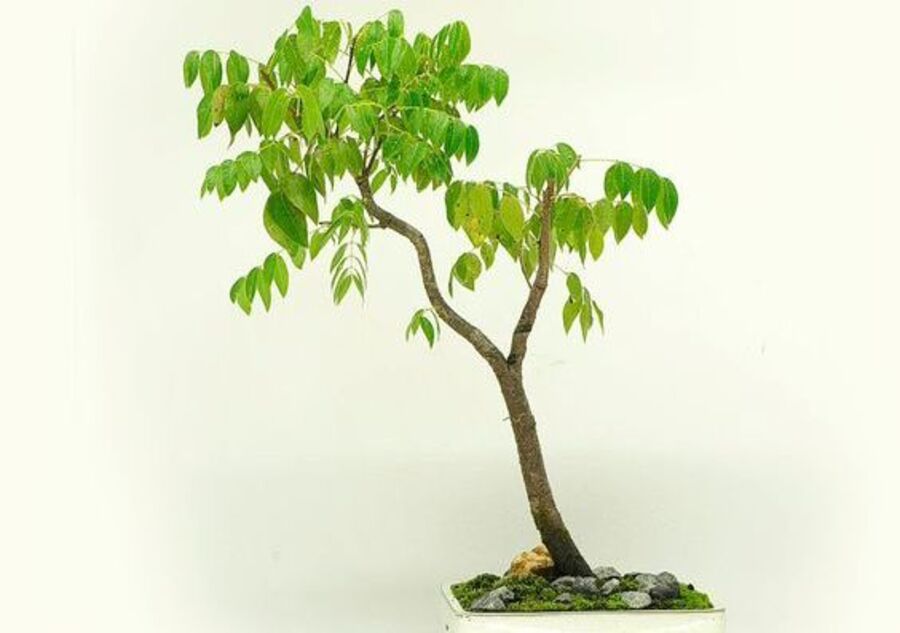
Types of Mahogany Tree Bonsai
There are numerous mahogany tree species that can be grown as bonsai. Here are some common varieties of bonsai made from mahogany trees:
Swietenia mahagoni (West Indian Mahogany): Native to the Caribbean, this species is known for its straight trunk and rich, reddish-brown wood. It has beautiful pinnate leaves with small leaflets, making it an attractive choice for bonsai.
Swietenia macrophylla (Honduran Mahogany): Native to Central and South America, Honduran Mahogany is highly valued for its timber and is often used in fine furniture. It has large, compound leaves and produces small, fragrant flowers.
Khaya senegalensis (African Mahogany): Found in West Africa, African Mahogany has a distinctive reddish-brown wood with a straight and uniform grain. It features compound leaves and produces small, white flowers.
Khaya ivorensis (Ivory Coast Mahogany): Also native to West Africa, Ivory Coast Mahogany has similar characteristics to African Mahogany, with compound leaves and attractive reddish-brown wood.
Entandrophragma cylindricum (Sapele Mahogany): Native to tropical Africa, Sapele Mahogany has a reddish-brown wood with a straight grain and a fine texture. It has compound leaves and produces small yellow flowers.
Toona ciliata (Australian Red Cedar): While not a true mahogany species, Australian Red Cedar is often referred to as “red cedar” and has similar qualities. It has pinnate leaves and a beautiful reddish-brown wood.
These are only a few species of mahogany trees that can be grown as bonsai. Each species has distinctive characteristics, such as leaf shape, bark texture, and wood color, which contribute to the bonsai tree’s overall aesthetic appeal. Bonsai devotees can investigate these various species and choose the one that best correlates with their preferences and regional growing conditions.
How to Grow a Mahogany Tree Bonsai
If you want a healthy, flourishing bonsai mahogany tree, you’ll need to pay close attention and use certain procedures. A bonsai mahogany tree may be grown by following this simple instructions.
- Species Selection: Choose a suitable species of mahogany tree for bonsai cultivation. Consider factors such as climate, available space, and personal preference. Common options include Swietenia mahagoni, Swietenia macrophylla, Khaya senegalensis, and others.
- Container and Soil: Select a bonsai container that provides adequate drainage. The size of the container should be proportionate to the size of the tree. Use a well-draining bonsai soil mix that retains moisture while allowing excess water to drain away.
- Seed or Pre-Bonsai: Decide whether you want to start with seeds or a pre-bonsai tree. Growing from seeds requires patience and a longer time commitment, while starting with a pre-bonsai allows you to work with a more developed tree.
- Germination (if starting from seeds): Soak the seeds in water overnight to soften the hard seed coat. Plant them in a seedling tray or small pots filled with a well-draining soil mix. Keep the soil consistently moist and provide indirect sunlight. Germination may take several weeks or longer.
- Pruning and Shaping: Once the mahogany tree bonsai has developed several sets of leaves, it is time to start pruning and shaping. Use sharp bonsai shears to carefully trim back new growth, encouraging branching and creating the desired shape. Remember to maintain the tree’s overall balance and aesthetics.
- Wiring (if needed): Wiring can be used to guide the branches and create desired shapes. Wrap bonsai wire around branches, starting from the base and working outward. Be gentle to avoid damaging the bark. Leave the wire in place for a few months to set the desired shape, then remove it to prevent wire marks.
- Watering and Fertilizing: Water the mahogany tree bonsai thoroughly whenever the top inch of soil feels dry. Avoid overwatering or letting the soil dry out completely. Fertilize regularly during the growing season using a balanced bonsai fertilizer. Follow the manufacturer’s instructions for application rates.
- Sunlight and Temperature: Bonsai of mahogany trees flourish in mild, sunny environments. Place the bonsai in a location that receives at least four to six hours of direct sunlight daily. Keep it away from extreme heat and weather, particularly during the winter.
- Repotting: Repot the mahogany tree bonsai every 2-3 years to refresh the soil and promote healthy root growth. Repot in the early spring before the growing season begins. Trim back some of the roots and prune the branches as needed during repotting.
- Maintenance and Care: Pests like aphids and spider mites may ruin your crop, so it’s important to keep a close eye out for them and take action if you see any. Maintain the tree’s shape by keeping an eye on its condition, watering and feeding it as needed, and continuing to prune as necessary.
Growing a mahogany tree bonsai requires patience, as it takes several years for the tree to develop its desired shape and mature appearance. With proper care, attention, and a love for the art of bonsai, your mahogany tree bonsai will become a miniature masterpiece, reflecting the beauty and grace of nature.
Benefits of Mahogany Tree Bonsai
Mahogany tree bonsai offers several benefits that make it a rewarding and enjoyable practice. Here are some key benefits of growing mahogany tree bonsai:
1. Aesthetic Beauty: Mahogany tree bonsai showcases the natural beauty of mahogany trees in miniature form. The glossy leaves, sturdy trunks, and textured bark of mahogany trees are preserved in bonsai, creating a visually captivating and appealing display. The artistic shaping and styling techniques used in bonsai cultivation further enhance the tree’s aesthetic appeal, making it a stunning addition to any indoor or outdoor space.
2. Therapeutic and Relaxing: Engaging in the art of mahogany tree bonsai can have therapeutic benefits. The process of tending to the tree, carefully pruning and shaping it, and observing its growth can be a calming and meditative experience. Bonsai cultivation allows individuals to connect with nature, reducing stress and promoting a sense of relaxation and tranquility.
3. Learning and Skill Development: Growing a mahogany tree bonsai provides an opportunity for continuous learning and skill development. It requires understanding the growth patterns of the tree, learning pruning and wiring techniques, and acquiring knowledge about bonsai care. The process of shaping and styling the bonsai tree allows individuals to develop their artistic skills and express their creativity.
4. Compact Size and Indoor Adaptability: Mahogany tree bonsai is well-suited for small living spaces or indoor environments. The miniature size of the bonsai allows enthusiasts to enjoy the beauty of mahogany trees without requiring a large garden or outdoor area. With proper care, mahogany tree bonsai can thrive indoors, allowing individuals in urban settings or with limited space to indulge in the art of bonsai.
5. Connection with Nature: Bonsai cultivation, including mahogany tree bonsai, fosters a deep connection with nature. As caretakers of the bonsai tree, individuals become attuned to the changing seasons, growth patterns, and needs of the tree. The close observation and interaction with the natural world through bonsai cultivation can cultivate a greater appreciation for the environment and deepen one’s understanding of the delicate balance of nature.
6. Sense of Accomplishment: Growing and nurturing a mahogany tree bonsai can provide a sense of accomplishment and pride. Witnessing the tree’s growth and development over time, as well as the successful shaping and styling of the bonsai, can be immensely satisfying. The ability to create and care for a living work of art brings a sense of achievement and fulfillment.
7. Sharing and Community: Bonsai cultivation, including mahogany tree bonsai, creates opportunities for sharing and connecting with a community of fellow enthusiasts. Bonsai clubs, workshops, and exhibitions offer platforms for individuals to share their knowledge, exchange ideas, and appreciate the artistry of bonsai together. Engaging with a bonsai community allows for learning, inspiration, and building meaningful relationships with like-minded individuals.
In summary, mahogany tree bonsai offers aesthetic beauty, therapeutic benefits, learning opportunities, adaptability to small spaces, a connection with nature, a sense of accomplishment, and a community of fellow enthusiasts. These benefits make mahogany tree bonsai a fulfilling and rewarding endeavor for bonsai enthusiasts of all levels of experience.
Styling and Design of a Mahogany Tree Bonsai
The styling and design of a mahogany tree bonsai involve shaping the tree to create a visually appealing composition while respecting its natural characteristics. Here are some considerations and techniques for styling and designing a mahogany tree bonsai:
Trunk Selection: Choose a mahogany tree bonsai with a well-formed and interesting trunk. Look for a trunk that has taper, movement, and character. The trunk should have a thick base that gradually tapers toward the apex, creating a sense of visual balance and harmony.
Branch Structure: Assess the existing branches of the mahogany tree bonsai and select those that contribute to the desired design. Remove any branches that detract from the overall composition, such as crossing branches or those that grow in undesirable directions. Aim for a balanced distribution of branches, with varying lengths and thicknesses to create visual interest.
Pruning: Pruning is a crucial technique in bonsai styling. Regular pruning helps refine the shape of the tree, encourages back-budding, and controls the overall size. Use sharp bonsai shears to selectively trim back new growth and maintain the desired silhouette. Pay attention to branch length, foliage density, and branch placement to achieve a balanced and harmonious appearance.
Wiring: Wiring is a technique used to guide and shape branches in bonsai styling. It allows for the manipulation of branch positions and the creation of desired shapes. When wiring a mahogany tree bonsai, use aluminum or copper wire of an appropriate thickness. Wrap the wire gently around branches, following their natural curves, and avoid placing it too tightly to prevent bark damage. Leave the wire in place for several months to set the desired shape, and then remove it to avoid wire marks.
Branch and Apex Placement: Consider the desired design of the mahogany tree bonsai when positioning branches and defining the apex. Aim for an open and airy design, allowing space between branches to create a sense of depth and perspective. Place branches in a staggered arrangement, with larger branches lower on the trunk and smaller branches higher up. The apex should be well-defined and slightly off-center to add visual interest.
Nebari Development: Nebari refers to the surface roots that radiate from the base of the tree, adding stability and visual appeal to the bonsai. Encourage nebari development in a mahogany tree bonsai by exposing and promoting the growth of surface roots. Remove any large, obtrusive roots that detract from the overall design. Consider techniques like air layering or grafting to improve nebari if necessary.
Pot Selection: Choose a suitable pot that complements the style and size of the mahogany tree bonsai. The pot should provide a harmonious balance with the tree’s proportions and colors. Consider the pot’s shape, color, and texture to enhance the overall aesthetic appeal of the bonsai.
Remember, bonsai styling is a dynamic and ongoing process. As the mahogany tree bonsai matures and evolves, continue to refine its design through pruning, wiring, and shaping techniques. Regular maintenance and observation will allow you to make adjustments and ensure the tree’s growth aligns with your artistic vision. Embrace the artistry of bonsai and let your creativity guide the styling and design of your mahogany tree bonsai.
How to Care for and Maintain a Mahogany Tree Bonsai
It is critical to care for and maintain a mahogany tree bonsai in order to ensure its health, development, and lifespan. Here are some crucial care tips to remember:
- Watering: Proper watering is crucial for the health of a mahogany tree bonsai. Water the bonsai thoroughly when the top inch of soil feels dry, ensuring that water penetrates the entire root ball. Avoid overwatering, as it can lead to root rot and also prevent the soil from drying out completely. Adjust the frequency of watering based on the climate, season, and the tree’s specific needs.
- Sunlight: Mahogany tree bonsai thrives in bright, indirect sunlight. Place the bonsai in a location that receives at least 4-6 hours of sunlight per day. If necessary, supplement natural light with artificial grow lights to ensure the bonsai receives adequate light, especially in low-light conditions or during the winter months.
- Temperature and Humidity: Mahogany tree bonsai prefer warm temperatures ranging from 60°F to 85°F (15°C to 29°C). Protect the bonsai from extreme temperature fluctuations and cold drafts, as they can stress the tree. While mahogany trees are relatively tolerant of low humidity, maintaining moderate humidity levels (around 50–60 %) can promote optimal growth. Mist the foliage occasionally or use humidity trays to increase humidity levels if needed.
- Fertilization: Regular fertilizing is essential for the healthy growth of a bonsai mahogany tree. During the growing season (spring to autumn), apply a balanced, organic bonsai fertilizer according to the manufacturer’s directions. Excessive or extended fertilizer application might result in nutritional imbalances and consequent root damage. To prevent fertilizer accumulation, flush the soil with plain water on a regular basis.
- Pruning and Trimming: Pruning is essential for maintaining the shape and health of a mahogany tree bonsai. Regularly inspect the bonsai for any dead, damaged, or overgrown branches and remove them with sharp bonsai shears. Additionally, trim back new growth to maintain the desired silhouette and encourage branching. Pruning should be done during the appropriate season, typically spring or early summer.
- Repotting: Repotting allows for the refreshment of the bonsai’s soil and the development of a healthy root system. Repot a mahogany tree bonsai every 2–3 years, typically in early spring before the growing season begins. Trim back a portion of the root ball and replace the soil with a well-draining bonsai soil mix. Prune the branches as needed to maintain balance and reduce stress on the tree during repotting.
- Pest and Disease Control: Check the mahogany tree bonsai for bugs like aphids, spider mites, or scale insects on a regular basis. If there are bugs, take the right steps to get rid of them, such as using organic pesticides or natural ways to get rid of pests. Keep an eye on the bonsai for signs of diseases like fungal infections or root rot and take care of them right away to stop more damage.
- Winter Care: Protect the mahogany tree bonsai from freezing temperatures during the winter. If growing the bonsai outdoors, consider providing frost protection by moving it to a sheltered location or covering it with a frost cloth. If the bonsai is kept indoors, ensure it receives adequate light and maintains proper humidity levels.
- Regular Maintenance: Regularly groom the bonsai by removing dead leaves, cleaning the foliage, and keeping the pot and surroundings tidy. Check the wiring periodically to prevent wires from cutting into the branches or trunk. Adjust or remove wires as necessary to prevent wire marks.
By following these care instructions, you can keep your mahogany tree bonsai healthy and vibrant, allowing it to grow and giving you years of beauty and delight. Watering, enough sunshine, temperature management, fertilizer, pruning, repotting, pest and disease control, and regular maintenance will guarantee that your mahogany tree bonsai remains healthy, alive, and an amazing monument to the art of bonsai.
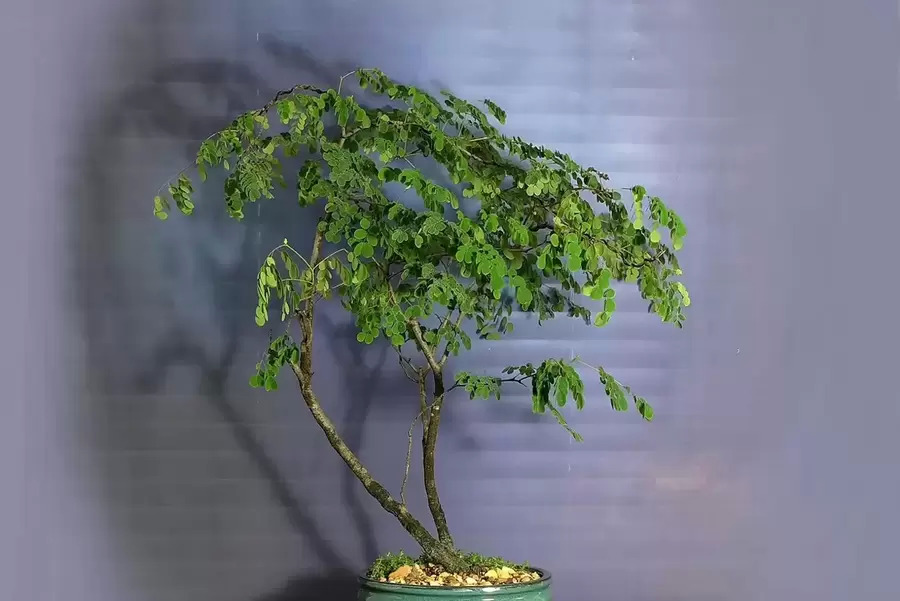
Mahogany Tree Bonsai Care Sheet
| Aspect | Care Tips |
| Watering | Water thoroughly when the top inch of soil feels dry. Avoid overwatering and ensure proper drainage. |
| Sunlight | Place the bonsai in a location with 4-6 hours of bright, indirect sunlight daily. Supplement with grow lights if needed. |
| Temperature | Maintain temperatures between 60°F to 85°F (15°C to 29°C). Protect from extreme temperature fluctuations and cold drafts. |
| Humidity | Moderate humidity levels (around 50-60%) are ideal. Mist foliage occasionally or use humidity trays if necessary. |
| Fertilization | Apply balanced, organic bonsai fertilizer during the growing season. Avoid excessive or prolonged fertilization. |
| Pruning and Trimming | Regularly prune dead, damaged, or overgrown branches. Trim back new growth to maintain the desired shape. |
| Repotting | Repot every 2-3 years in early spring using well-draining bonsai soil mix. Trim back roots and prune branches as needed. |
| Pest and Disease Control | Monitor for pests and diseases. Take appropriate measures to control them, using organic insecticides or natural methods. |
| Winter Care | Protect from freezing temperatures. Provide frost protection or move indoors if necessary. |
| Regular Maintenance | Groom the bonsai by removing dead leaves, cleaning foliage, and tidying the pot and surroundings. Check and adjust wiring as needed. |
This care document covers the important components of mahogany tree bonsai maintenance and offers advice on how to keep your bonsai healthy and happy. Remember to modify the care routine to meet the individual demands of your mahogany tree bonsai and to keep a careful eye on it to address any special needs.
Conclusion:
Mahogany tree bonsai is an enthralling art form that allows you to enjoy nature’s beauty on a tiny scale. You may produce gorgeous mahogany tree bonsai that rival the magnificence of their full-sized counterparts by learning the fundamentals of bonsai cultivation, maintenance, and styling. Finally, by optimizing your work for search engines, you may reach a larger audience and cultivate a broader respect for this unique art form.
FAQ:
Q: How long does it take for a Mahogany Tree Bonsai to mature?
A: The time for a Mahogany Tree Bonsai to mature can vary depending on factors such as the tree’s age, species, and growth conditions. It typically takes several years, around 5 to 10 years or more, for a Mahogany Tree Bonsai to develop a mature appearance.
Q: Can Mahogany Tree Bonsai be kept indoors?
A: While Mahogany Tree Bonsai is best suited for outdoor environments, some species can be kept indoors with proper care. They require adequate sunlight, humidity, and air circulation. It’s important to select appropriate indoor species and provide the necessary conditions for their health and growth.
Q: How often should I water my Mahogany Tree Bonsai?
A: The frequency of watering a Mahogany Tree Bonsai depends on factors such as climate, pot size, and soil composition. As a general rule, water the bonsai when the top inch of soil feels dry. Ensure thorough watering, allowing water to reach the entire root ball, but avoid overwatering to prevent root rot.
Q: What is the best time to prune a Mahogany Tree Bonsai?
A: The best time to prune a Mahogany Tree Bonsai is during the spring or early summer, when the tree is actively growing. Pruning during this period allows for faster healing and minimizes stress on the tree.
Q: What species of mahogany are commonly used for bonsai?
A: The Swietenia genus, which includes Swietenia mahagoni (West Indian mahogany) and Swietenia macrophylla (Honduran mahogany), is frequently utilized for Mahogany Tree Bonsai due to its desirable qualities.
Q: How often should I fertilize my Mahogany Tree Bonsai?
A: Mahogany Tree Bonsai benefits from regular fertilization during the growing season, typically from spring to fall. Apply a balanced, organic bonsai fertilizer every 2-4 weeks, following the manufacturer’s instructions.
Q: How can I create a bonsai shape in my Mahogany Tree Bonsai?
A: Creating a bonsai shape involves techniques like pruning, wiring, and shaping. Prune excess growth, use wiring to guide branches into desired positions, and shape the foliage through selective trimming. With patience and careful manipulation, you can achieve the desired bonsai shape over time.
Also Read:

